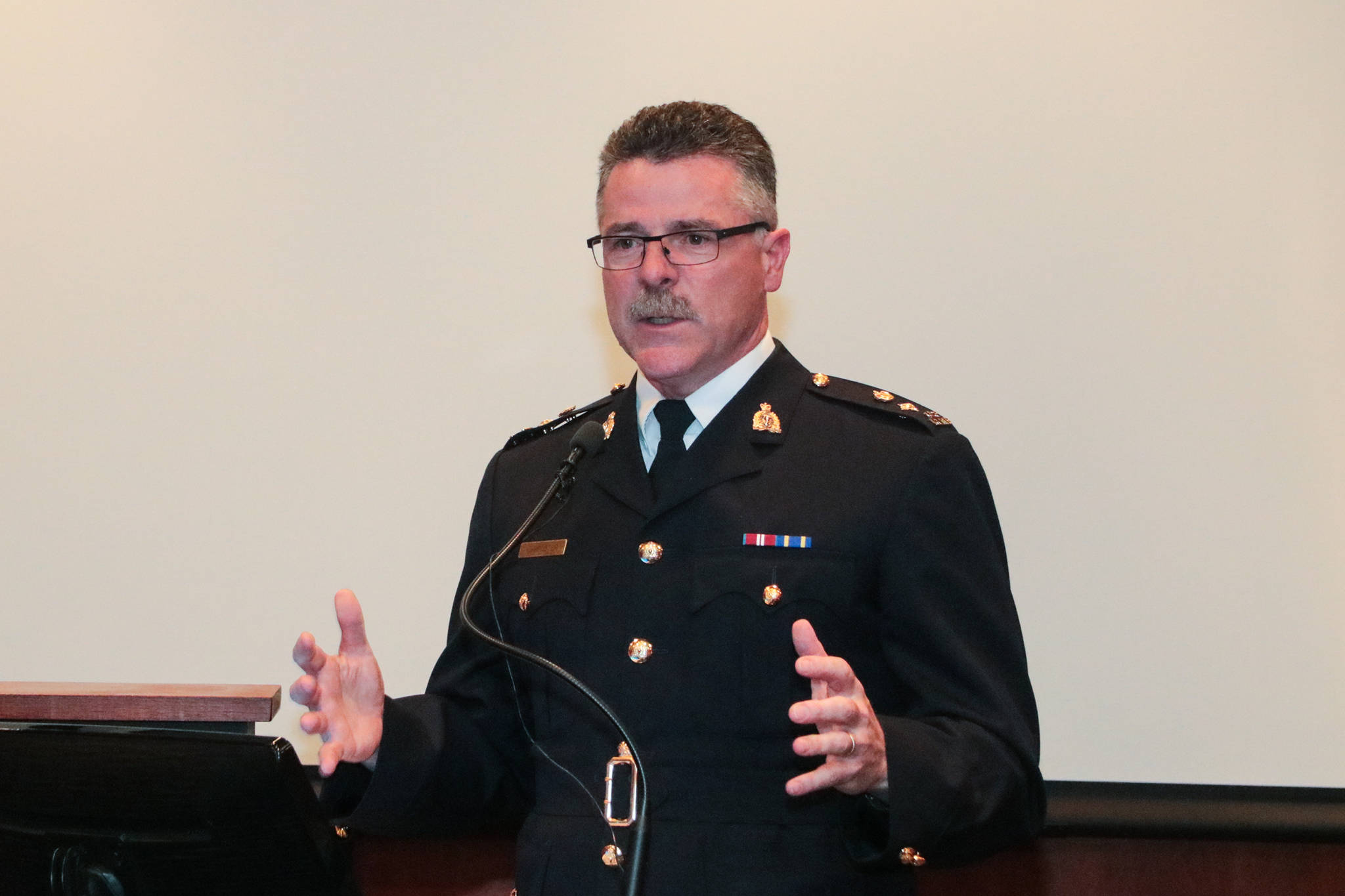The City of Red Deer and the RCMP held a joint press conference to announce the 2017-18 Annual Policing Plan (APP).
The APP outlines the policing priorities put in place that cover the RCMP fiscal year from April 1st, 2017 – March 31st, 2018.
“Crime continues to be a top priority for the community, as seen in the Ipsos survey results released by the City of Red Deer,” said Paul Goranson, director of the newly-formed Protective Services division, which brings RCMP, Emergency Services and Fire together under one umbrella.
“The APP presents a key opportunity for City council to work closely with RCMP to establish policing priorities, and the organizational shift to a Protective Services division enables us to focus even more on support of those priorities.”
The APP outlines five priorities for 2017-18 — putting particular emphasis on property crime, which causes the RCMP the most angst, according to RCMP Superintendent Ken Foster.
The five priorities are reduce property crime through continued management of habitual offenders and through development of a number of internal and external education campaigns and prevent and reduce incidence of crime involving youth through continued implementation of the Youth Intervention Program with a focus on youth within the High Risk Coalition.
Other priorities include building and maintaining positive relationships within the RCMP and with police partners, with a focus on implementing a number of public campaigns; increasing communication with downtown stakeholders and increasing RCMP presence in the downtown and finally building and maintaining quality of service, with a focus on increasing the number of call backs to victims and increasing police attendance at break and enters.
Foster said that the downturn in the economy and addiction play a huge role in the rise of property crime in Red Deer.
“There are a lot of socio-economic reasons as to why certain people get involved with crime,” Foster said.
“They may have had good jobs that they lost. They lost the job but the addictions don’t get the layoff notice. Most of these crimes are driven by drugs and the issues folks have around them.”
Foster also noted the downtown in the economy means that many young males are unemployed and statistics show that young males commit a greater number of crimes than any demographic.
The international opioid crisis is also contributing to rising crime rates throughout Canada and the U.S.
“It is a significant problem and I point to the American War on Drugs,” he said.
“The U.S. spent billions and billions of dollars and it is still there. Until you take away the demand, you will always have the supply.
“Public education is a big portion of (solving) it. If you look back to the methamphetamine crisis of the early 2000s, it peaked, but a lot of public education around it, certainly with youth, has had some successes. It is fentanyl today, and in two years, five years it will be something else.”
He added international drug smuggling is beyond his mandate, however the RCMP nationally works alongside law enforcement agencies all over the world to tackle that issue.
To combat rising crimes, the Red Deer RCMP has turned to advanced analytics — which relies on Red Deerians reporting any crime, no matter how small.
“The trend is analytics and that is why reporting a crime is absolutely critical,” he said. “We may not be able to solve that particular crime or even be able to attend that crime, but it helps us draw a map daily as to where it is happening, who is committing it and the amount of times it is happening.”
He added that Red Deer is one of the busiest detachments in Alberta, receiving over 53,000 calls per year and that the Red Deer RCMP was successful in all the priorities of last year’s APP.
“If something didn’t carry forward, that doesn’t mean we have stopped doing them,” he explained, adding that domestic violence policing and missing persons cases both saw improvement last year.
Foster stressed that the RCMP has the same concerns regarding crime as everyone else in Red Deer.
“The main message is that we share the same concerns of crime in the community,” he said.
“All of our people are citizens of Red Deer – they live here; they raise their families here and they are proud of this City. We are collectively trying to make a difference.
“Lock your doors and don’t keep valuables. Most criminals are ambitious and they will look for the quickest, easiest way. Try to protect yourself from being a victim. Get to know your neighbors. That is one of the better things you can do. Get to know them, what their habits are and if you see something suspicious — call.”
One thing that was not identified as a priority but something that the RCMP works closely alongside community organizations with is rehabilitation.
“Rehabilitation of offenders touches a lot of people,” Foster said.
“It is not strictly a police thing, in fact I would argue it is not a police thing. We are at the table with our social agencies and our partners — one of those being the Wellness Integration Committee — and we are trying to get the needs of those folks who are involved in crime or have those chronic issues around addiction, perhaps mental health and perhaps homelessness.
“If we can address those root causes, crime will go down.”
Mayor Tara veer pointed to the new Protective Services Division of the City of Red Deer as a way for the City and the RCMP to better collaborate on crime issues.
“The progress we are collaboratively making on achieving the objectives set out in the 2017-18 annual policing plan speaks to the commitment of not only the City and Red Deer RCMP but of the many citizens in our community who work to reduce crime and increase public safety.”



